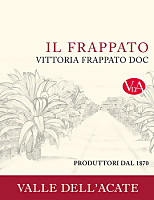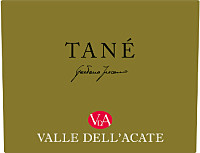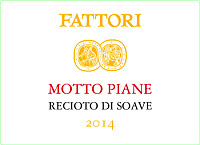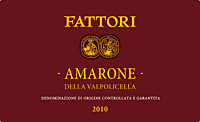
Wine Culture and Information since 2002 - Volume 22
 Wine Culture and Information since 2002 - Volume 22 |
|
Contrasts of Gewürztraminer and Pinot BlancAromatic power compared to elegance and character: two completely different varieties however both capable of making great wines |
|
Tasting by contrast done by evaluating wines having very different characteristics is useful to understand the respective qualities for the fact they are emphasized by the comparative element. This is what will happen in the tasting by contrast of this month by comparing the opposed qualities of Gewürztraminer and Pinot Blanc. Two varieties protagonists of many important moments of modern wine making history of Europe, each of them having its own peculiarities and, in particular, a versatility in the production of wines. Gewürztraminer is one of the very few varieties belonging to the family of the so called aromatic grapes, which wines express an olfactory character directly recalling the aroma of grape. Pinot Blanc, a variety of very ancient origins, gives wines of character and personality, as well as being successfully used in the production of classic method sparkling wines, that is refermented in bottle. The use of these grapes is pretty different, of course because of their respective characteristics, however they are both successfully used in the production of dry table wines. Our tasting by contrast will evaluate wines belonging to this category. Gewürztraminer and Pinot Blanc are, in any case, important protagonists of worldwide wine making, they are widely spread in many wine countries of the world, used both alone and blended to other varieties. Both varieties are also used in those magnificent wines made in some areas of Central Europe and called eiswein, commonly known as “ice wines”. A concentration of explosive sensorial emotions, these magnificent wines are mainly produced in Germany and Austria by using many varieties and, among the many, Gewürztraminer and Pinot Blanc.
|
|
Gewürztraminer is an aromatic variety, that is part of the family - a pretty small family indeed - of grapes which wines express aromas directly recalling grape juice. A family made of just three members and including Muscat Blanc and Brachetto as well. A quality, like to say, rare, so rare it is sometimes cause of confusion because some end up believing this characteristic is also found in the vast family of the semi-aromatic grapes. In this sense, the aromatic power of Gewürztraminer is absolutely remarkable as to become, in certain wines, even sickly according to the opinion of some. On the other hand, for others it is the explosive aromatic power to make extraordinary wines. Gewürztraminer, of course, is a lot more than this and has other good qualities to offer to the taster's senses, including a remarkable body well supported by alcohol and crispness. The history of Gewürztraminer is, for certain regards, characterized by a sort of mystery which lasted a quite long time. It is believed Gewürztraminer originated from a genetic mutation of “Traminer”, name with which was known Savagnin Blanc grape in South Tyrol, Italy. This variety, originating from France, is used for the production of the renowned “vin jaune” of French Jura and, despite the name could be cause of confusion, it does not have any connection to Sauvignon Blanc. It seems the mutation took place in South Tyrol when the color of the skin got a coppery hue and, for this reason, was therefore called Red Traminer, known in France as Savagnin Rosé. It is believed Gewürztraminer originated from a subsequent mutation of this variety and developed its strong aromatic character. Its name consists of the German term Gewürz - which translates as spicy - and Traminer, that is coming from Tramin, the well known town in South Tyrol, Italy.
|
||||
|
Pinot Blanc is a variety rich of charm and history and claims a close connection to Pinot Noir. It is in fact believed Pinot Blanc is a genetic mutation of Pinot Noir, a fate also shared with Pinot Gris. It should be said the connection to Pinot Noir is so close as to have the same genetic profile, a condition therefore not allowing the determination of which of the three is the ancestor from which the other ones originated from. The most common theory supports the idea Pinot Noir is the primary variety from which, because of mutations, originated the other two. Something in which everyone agrees on is the fact the Pinot family is very old, already known since the times of ancient Romans, and its homeland is Burgundy, France. Since those times these grapes were recognized as capable of making prestigious wines, a quality they still have today. A charm, nevertheless, recognized to Pinot Blanc as well. From Burgundy Pinot Blanc has spread all over the world and today it is virtually found in every wine country of the planet. Of all the territories in which Pinot Blanc is found, Alsace certainly is the most significant one and here are produced the best wines made with this variety. A grape of remarkable enological versatility, Pinot Blanc is successfully used in many wine styles, from table wines to sweet wines made from dried grapes, as well as being an interesting interpreter in classic method sparkling wines. On this regard it should be noticed in the past Pinot Blanc was used for the production of Champagne, a role it however lost with time. Pinot Blanc is still today an appreciated variety for the production of classic method sparkling wines, including Franciacorta. Pinot Blanc - just like its relatives Pinot Gris and Pinot Noir - is a variety requiring the highest quality standards both in vineyard and in winery, an essential factor in order to make great wines.
|
|
The two grapes of our tasting by contrast give their best in case they are cultivated in pretty cold areas, whereas in warm areas they may give less elegant wines and, sometimes, even ordinary. In Italy the best wines produced with Gewürztraminer and Pinot Blanc come from the North-Eastern areas of the country, in particular from Alto Adige. For this reason, our tasting by contrast will examine two wines coming from this region. In both cases we will make sure the wines are produced with the respective varieties alone and vinified in steel tanks, in order to ensure the least contaminated sensorial expression possible. We will also make sure the wines belong to the most recent vintage, therefore we will evaluate young wines. Gewürztraminer and Pinot Blanc will be poured in their respective glasses at a temperature of 10 °C (50 °F).
Our tasting by contrast starts with the evaluation of the appearance in both wines, let's therefore pour them in their respective glasses. The first wine of which we will evaluate color and transparency is Pinot Blanc. Let's tilt the glass on a white surface - we simply need a sheet of paper for that - and observe the wine at the base of the glass. In the color of Pinot Blanc can be recognized a pale straw yellow hue as well as greenish yellow. Let's now observe the wine towards the opening of the glass, in the point where the wine is thinner: we will see evident nuances of greenish yellow. By observing Gewürztraminer we will notice a substantial difference from Pinot Blanc: here the color is evidently golden yellow, which could also sometimes be intense straw yellow. The evaluation of nuances, done by tilting the glass, will reveal, once again, a golden yellow color. The olfactory evaluation of Gewürztraminer and Pinot Blanc will make the difference between the two grapes even more evident. The main reason is, of course, the expressive differences of the olfactory profiles of the two grapes. Gewürztraminer is in fact an aromatic variety - that is its wines directly express the aroma of grape and grape juice - whereas Pinot Blanc does not belong to this category. This does not mean wines produced with Pinot Blanc have no olfactory interest, indeed, it is a grape capable of giving very interesting aromatic finesse. The comparison with an aromatic variety such as Gewürztraminer - powerful and full - will make any other variety seem like not having any olfactory expression, except in case of other aromatic grapes. The discriminating factor is, like we already said, the intense aroma of grape and grape juice, a quality the grapes of this family clearly and evidently keep in their wines. In case we have to taste two wines having different aromatic intensities, in particular in case one of them is made with an aromatic variety, it is always advised to start from the less aromatic one. For this reason, the first wine of which we will evaluate the olfactory profile is Pinot Blanc. Let's hold the glass in vertical position and, without swirling, evaluate the opening of the wine. We will perceive aromas of apple and pear with evident notes of pineapple and hawthorn. After having swirled the glass, the profile of Pinot Blanc is completed by peach, broom, plum, citrus fruits and, sometimes, evident notes of hazelnut and even almond. Let's now evaluate the opening of Gewürztraminer in which we will perceive a strong aroma of fresh grape, not found in Pinot Blanc. Besides the characteristic grape aroma, the opening is also characterized by peach, lychee and white rose. After having swirled the glass, the profile of Gewürztraminer is completed by apricot, pineapple, pear, apple, citrus fruits, candied fruits and broom, as well as pleasing notes of aromatic herbs such as sage. Let's now pass to the gustatory evaluation of the two wines and, also in this phase, we will continue to perceive substantial differences in Pinot Blanc and Gewürztraminer. Let's take a sip of Pinot Blanc and evaluate its attack, that is the initial sensations perceived to the mouth. The attack of this wine is characterized by an evident crispness produced by acidity, to which follows the appreciable warm sensation of alcohol. Moreover, we will perceive a good structure and a correspondence to the nose, in particular, will be perceived flavors of apple, pear, pineapple and peach. Let's now pass to the gustatory evaluation of Gewürztraminer: let's take a sip of this wine and examine its attack. In the mouth will be clearly perceive the rich structure of the wine, to which follows a pleasing roundness supported by a well balanced acidity. It should be noticed the sensation of roundness can sometimes be origin of confusion for the taster and can make he or she believe the wine is sweet, indeed it is absolutely dry. In the mouth is perceived a good correspondence to the nose, in particular the flavor of grape - intense and powerful - as well as peach and lychee. Finally, it should be noticed the important contribution of alcohol which, besides producing the typical warm and burning sensation, plays a significant role in enhancing the roundness of Gewürztraminer. The ending phase of our tasting by contrast will focus on the final sensations the two wines leave in the mouth after having swallowed them. In the finish of Pinot Blanc can be appreciated flavors of apple, pear, pineapple, citrus fruits and, sometimes, a pleasing hint of hazelnut. The sensation left in the mouth expresses a pleasing crispness as well as a good structure. The finish of Gewürztraminer is evidently more robust, leaving in the mouth an evident sensation of roundness as well as a good taste-olfactory persistence. In the mouth are perceived, clean and intense, the flavors of grape, lychee, peach and, sometimes, a pleasing and slight bitter flavor well fused to the finish of the wine. Pinot Blanc and Gewürztraminer are two varieties very different one from each other, however both capable of making wines of remarkable value. The comparison with a non aromatic grape, such as Pinot Blanc, makes very clear, because of the contrast, the powerful aromatic nature of Gewürztraminer.
|
||||||||
Wines of the Month |
|
|
|
Score legend Prices are to be considered as indicative. Prices may vary according to the country or the shop where wines are bought |

|
|
Piemonte Albarossa Macchiaferro 2011 |
|
| L'Armangia (Piedmont, Italy) | |
 Albarossa Albarossa | |
| Price: € 15.00 | Score: |
 Deep ruby red and nuances of ruby red, impenetrable to light. Deep ruby red and nuances of ruby red, impenetrable to light. Intense, clean, pleasing and refined, starts with hints of black
cherry, plum and blueberry followed by aromas of violet, black currant,
blackberry, vanilla, iris, chocolate, tobacco and menthol. Intense, clean, pleasing and refined, starts with hints of black
cherry, plum and blueberry followed by aromas of violet, black currant,
blackberry, vanilla, iris, chocolate, tobacco and menthol.
 Properly tannic attack and however balanced by alcohol, good body,
intense flavors, pleasing crispness. Properly tannic attack and however balanced by alcohol, good body,
intense flavors, pleasing crispness.
 Persistent finish with flavors of black cherry, plum and blueberry. Persistent finish with flavors of black cherry, plum and blueberry. 14 months in cask. 14 months in cask. |
|
 Roasted meat, Stewed and braised meat with mushrooms, Broiled meat and barbecue, Hard cheese Roasted meat, Stewed and braised meat with mushrooms, Broiled meat and barbecue, Hard cheese |
|

|
|
Barbera d'Asti Superiore Nizza Vignali 2010 |
|
| L'Armangia (Piedmont, Italy) | |
 Barbera Barbera | |
| Price: € 23.00 | Score: |
 Intense ruby red and nuances of garnet red, little transparency. Intense ruby red and nuances of garnet red, little transparency. Intense, clean, pleasing, refined and elegant, starts with hints of
cherry, plum and violet followed by aromas of blueberry, raspberry,
vanilla, tobacco, cocoa, cinnamon, mace and menthol. Intense, clean, pleasing, refined and elegant, starts with hints of
cherry, plum and violet followed by aromas of blueberry, raspberry,
vanilla, tobacco, cocoa, cinnamon, mace and menthol.
 Properly tannic attack and however balanced by alcohol, good body,
intense flavors, pleasing roundness. Properly tannic attack and however balanced by alcohol, good body,
intense flavors, pleasing roundness.
 Persistent finish with flavors of cherry, plum and blueberry. Persistent finish with flavors of cherry, plum and blueberry. 13 months in barrique, 12 months in cask, about 36 month in bottle. 13 months in barrique, 12 months in cask, about 36 month in bottle. |
|
 Broiled meat and barbecue, Roasted meat, Stewed and braised meat, Hard cheese Broiled meat and barbecue, Roasted meat, Stewed and braised meat, Hard cheese |
|

|
|
Vittoria Frappato 2015 |
|
| Valle dell'Acate (Sicily, Italy) | |
 Frappato Frappato | |
| Price: € 12.00 | Score: |
 Brilliant ruby red and nuances of ruby red, moderate transparency. Brilliant ruby red and nuances of ruby red, moderate transparency. Intense, clean, pleasing and refined, starts with hints of cherry,
blackberry and raspberry followed by aromas of violet, plum, strawberry, rose, blueberry and black pepper. Intense, clean, pleasing and refined, starts with hints of cherry,
blackberry and raspberry followed by aromas of violet, plum, strawberry, rose, blueberry and black pepper.
 Properly tannic attack and however balanced by alcohol, good body,
intense flavors, pleasing crispness. Properly tannic attack and however balanced by alcohol, good body,
intense flavors, pleasing crispness.
 Persistent finish with flavors of cherry, raspberry and strawberry. Persistent finish with flavors of cherry, raspberry and strawberry. 6 months in steel tanks, 3 months in bottle. 6 months in steel tanks, 3 months in bottle. |
|
 Cold cuts, Pasta with meat, Sauteed meat, Fish soups Cold cuts, Pasta with meat, Sauteed meat, Fish soups |
|

|
|
Tané 2011 |
|
| Valle dell'Acate (Sicily, Italy) | |
 Nero d'Avola Nero d'Avola | |
| Price: € 30.00 | Score: |
 Brilliant ruby red and nuances of garnet red, little transparency. Brilliant ruby red and nuances of garnet red, little transparency. Intense, clean, pleasing and refined, starts with hints of plum,
blackberry and dried violet followed by aromas of black cherry, blueberry,
tobacco, vanilla, chocolate, leather and eucalyptus. Intense, clean, pleasing and refined, starts with hints of plum,
blackberry and dried violet followed by aromas of black cherry, blueberry,
tobacco, vanilla, chocolate, leather and eucalyptus.
 Properly tannic attack and however balanced by alcohol, good body,
intense flavors, pleasing roundness. Properly tannic attack and however balanced by alcohol, good body,
intense flavors, pleasing roundness.
 Persistent finish with flavors of plum, blackberry and black cherry. Persistent finish with flavors of plum, blackberry and black cherry. 12 months in barrique, 14 months in bottle. 12 months in barrique, 14 months in bottle. |
|
 Roasted meat, Broiled meat and barbecue, Stewed and braised meat with mushrooms, Hard cheese Roasted meat, Broiled meat and barbecue, Stewed and braised meat with mushrooms, Hard cheese |
|

|
|
Recioto di Soave Motto Piane 2014 |
|
| Fattori (Veneto, Italy) | |
 Garganega Garganega | |
| Price: € 15.00 - 50cl | Score: |
 Brilliant amber yellow and nuances of amber yellow, transparent. Brilliant amber yellow and nuances of amber yellow, transparent. Intense, clean, pleasing, refined and elegant, starts with hints of
raisin, candied fruits and dried apricot followed by aromas of honey,
lychee, dried fig, peach jam, citrus fruit peel, quince jam, date, almond,
vanilla and nail polish. Intense, clean, pleasing, refined and elegant, starts with hints of
raisin, candied fruits and dried apricot followed by aromas of honey,
lychee, dried fig, peach jam, citrus fruit peel, quince jam, date, almond,
vanilla and nail polish.
 Sweet and crisp attack, however balanced by alcohol, good body, intense
flavors, pleasing roundness. Sweet and crisp attack, however balanced by alcohol, good body, intense
flavors, pleasing roundness.
 Persistent finish with flavors of raisin, honey and dried apricot. Persistent finish with flavors of raisin, honey and dried apricot. A small part ferments in cask. 12 months in steel tanks. A small part ferments in cask. 12 months in steel tanks. |
|
 Fruit and cream tarts, Hard cheese Fruit and cream tarts, Hard cheese |
|

|
|
Amarone della Valpolicella 2010 |
|
| Fattori (Veneto, Italy) | |
 Corvina (65%), Corvinone (15%), Rondinella (10%), Other Grapes (10%) Corvina (65%), Corvinone (15%), Rondinella (10%), Other Grapes (10%) | |
| Price: € 48.20 | Score: |
 Intense ruby red and nuances of garnet red, little transparency. Intense ruby red and nuances of garnet red, little transparency. Intense, clean, pleasing, refined and elegant, starts with hints of
blackberry, plum and black cherry followed by aromas of dried violet,
blueberry, iris, vanilla, chocolate, face powder, tobacco, cinnamon, walnut
husk, mace and menthol. Intense, clean, pleasing, refined and elegant, starts with hints of
blackberry, plum and black cherry followed by aromas of dried violet,
blueberry, iris, vanilla, chocolate, face powder, tobacco, cinnamon, walnut
husk, mace and menthol.
 Tannic attack and however balanced by alcohol, full body, intense
flavors, pleasing roundness. Tannic attack and however balanced by alcohol, full body, intense
flavors, pleasing roundness.
 Very persistent finish with long flavors of blackberry, black cherry
and plum. Very persistent finish with long flavors of blackberry, black cherry
and plum.
 36 months in cask. 36 months in cask. |
|
 Game, Braised and stewed meat, Roasted meat, Hard cheese Game, Braised and stewed meat, Roasted meat, Hard cheese |
|

|
|
Cilento Aglianico Vigna dei Russi 2011 |
|
| Cobellis (Campania, Italy) | |
 Aglianico Aglianico | |
| Price: € 20.00 | Score: |
 Intense ruby red and nuances of garnet red, little transparency. Intense ruby red and nuances of garnet red, little transparency. Intense, clean, pleasing, refined and elegant, starts with hints of
black cherry, plum and blackberry followed by aromas of violet, blueberry,
iris, vanilla, cocoa, licorice, leather, mace, tobacco and menthol. Intense, clean, pleasing, refined and elegant, starts with hints of
black cherry, plum and blackberry followed by aromas of violet, blueberry,
iris, vanilla, cocoa, licorice, leather, mace, tobacco and menthol.
 Tannic attack and however balanced by alcohol, full body, intense
flavors, pleasing roundness. Tannic attack and however balanced by alcohol, full body, intense
flavors, pleasing roundness.
 Persistent finish with flavors of blackberry, plum and black cherry. Persistent finish with flavors of blackberry, plum and black cherry. 12 months in barrique, 4 months in steel tanks, 6 months in bottle. 12 months in barrique, 4 months in steel tanks, 6 months in bottle. |
|
 Game, Roasted meat, Stewed and braised meat, Hard cheese Game, Roasted meat, Stewed and braised meat, Hard cheese |
|

|
|
Cilento Fiano Crai 2013 |
|
| Cobellis (Campania, Italy) | |
 Fiano Fiano | |
| Price: € 18.00 | Score: |
 Brilliant golden yellow and nuances of golden yellow, very transparent. Brilliant golden yellow and nuances of golden yellow, very transparent. Intense, clean, pleasing, refined and elegant, starts with hints of
quince, plum and honey followed by aromas of citrus fruits, hazelnut,
mature peach, pear, honey, medlar, hawthorn, rosemary and mineral. Intense, clean, pleasing, refined and elegant, starts with hints of
quince, plum and honey followed by aromas of citrus fruits, hazelnut,
mature peach, pear, honey, medlar, hawthorn, rosemary and mineral.
 Crisp attack and however balanced by alcohol, good body, intense
flavors, pleasing roundness. Crisp attack and however balanced by alcohol, good body, intense
flavors, pleasing roundness.
 Persistent finish with flavors of quince, plum and honey. Persistent finish with flavors of quince, plum and honey. 6 months in steel tanks. 6 months in steel tanks. |
|
 Stuffed pasta with meat, Roasted fish, Roasted white meat, Mushroom soups Stuffed pasta with meat, Roasted fish, Roasted white meat, Mushroom soups |
|
|
||||||||
|
DiWineTaste Polls
|
| |||||||
Privacy Policy | |||||||


| Copyright © 2002-2024 Antonello Biancalana, DiWineTaste - All rights reserved |
| All rights reserved under international copyright conventions. No part of this publication and of this WEB site may be
reproduced or utilized in any form or by any means, electronic or mechanical, without permission in writing from DiWineTaste. |